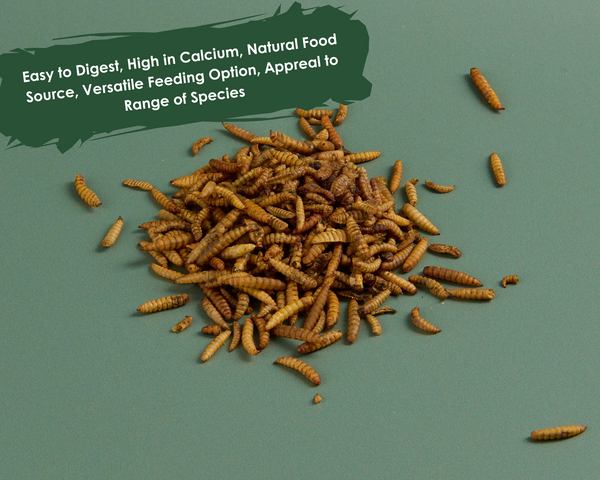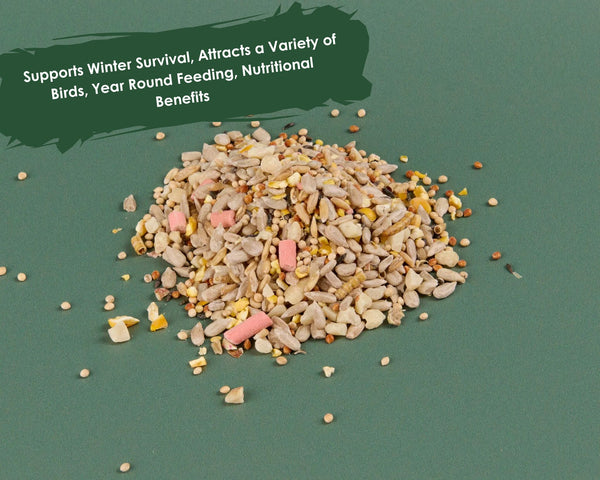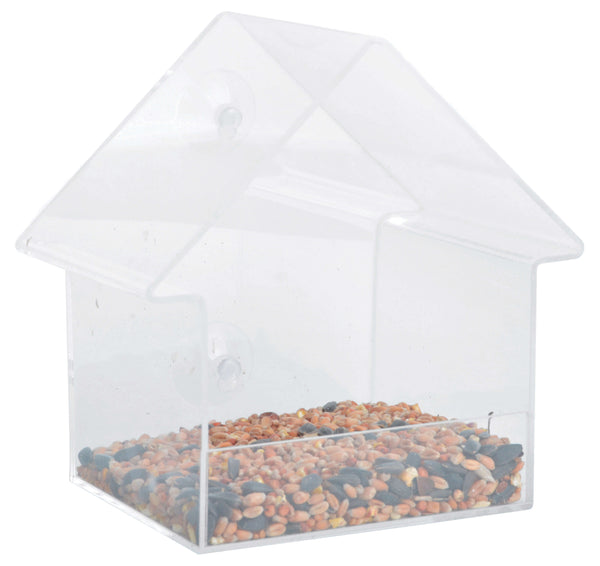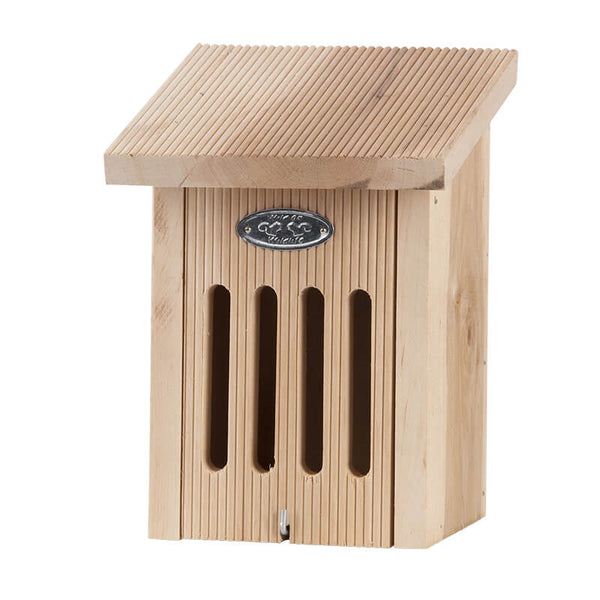Wildlife for Kids
Making sure that your kids get enough of the outside world can seem tricky in this age of tablets and smart devices. The trick, however, is to make sure that they have a reason to want to go outside. What better reason than wildlife?
Ensuring that your kids know a good amount about wildlife and want to get out and amongst it makes all the difference. Before long, you can be sure that they'll be asking to go and visit some cool spots near you - we live in a wonderful world, and they'll see that incredibly quickly.
What is called wildlife?
The things that people define as wildlife tend to change from person to person. One person might consider stray cats a part of wildlife, for example, while one person may only consider wild squirrels, birds, and hedgehogs to be wildlife.

The difference
Generally speaking, it's wise to consider undomesticated animals as wildlife. This means that any animal that humans haven't trained should be considered wildlife, while a trained, domesticated species is something else.

A great example
For example, a dairy cow that sometimes is seen in a field ought to be considered a tame animal, while a wild highland cow in Scotland could be considered wildlife.

That specific distinction likely doesn't mean too much to you or your kids. Really, it's wise to focus on the natural world near you and consider wildlife near you too.
Birds
For most people, their primary interaction with wildlife will be birds, especially in the UK, which has a high number of birds for the size of the nation.

Wild birds will be seen in two situations, really - your back garden, and public green spaces.
Gardens
Your back garden is one of those spaces where it's best to get involved with your kids and wildlife. There is a huge range of different ecosystems right under our noses, and by just stepping out into the back garden and looking, we can learn a whole lot.
Birds
In most gardens, you're most likely to see birds around a bird bath or a feeding station. The UK has a huge number of bird feeders per house, and getting one or two will allow you a small window into wildlife near your home.

Mammals
To see mammals and other types of local wildlife near you, you may need to try a little harder than simply buying a bird table.

Motion-sensing cameras
Depending upon where you live and the proximity of your home to large green spaces, you're likely to get some level of hedgehogs, foxes, and squirrels in your garden.
To spot these nocturnal animals, you could get a motion-sensing camera, spying on the creatures that come right up to your door!
Please note that you can buy specialist nest boxes with cameras ideal for keeping a close eye on birds and their young that the kids will LOVE!
Green spaces
Green spaces are a brilliant way to find great wildlife near you. The best option is often a park, but we'd encourage you to go a little further afield, and seek out a nature reserve.

Nature reserves
A nature reserve is a wonderful organization that engages in protecting wildlife for the good of wild animals themselves.
Local ones to you might specialize in specific species, or they may be large and complex enough to have a range of animals that they care for.
Walking
While it may seem a little surprising, kids love to go out for a walk in nature.

They may get a little tuckered out by the end of it, and it might be tricky to encourage them to get out there, but once they're amongst the trees and animals, they'll be just as excited as you'd hope.
How to encourage children into the garden
Your garden is the closest and easiest green space for you to get your children into.
Small gardens are great too!

It doesn't necessarily need to be sprawling and complex to get kids excited about nature. Instead, it simply needs to exist - even speaking about nature on a micro-scale can pique the interest of kids.
Ponds
Digging and maintaining a pond is a great way for kids to get involved in the garden.
Wild animals will flock to a pond or any similar body of water; from birds to frogs, and everything in between.

Simplicity
The great thing about ponds is that they're exceptionally low maintenance.
While you can maintain an elegant and complex zen-like pond, you can also dig a hole and leave it to its own devices - ponds, pools, and lakes exist in the wild, and nature will know what to do with them.
Frogspawn
A great thing to look out for in ponds is frogspawn.

This is something that kids will absolutely adore since the life cycle of a frog is so alien to their own. They'll be fascinated by watching the eggs develop and then become tiny frogs.
You can, of course, also use a pond to care for a small population of fish.
Fish
While koi or goldfish are the most visually striking, there are a host of options out there. The drawback of this option is that it can be a little slow, and birds can sometimes swoop down to take the fish - this makes it quite unsuitable for particularly young kids.

Bird feeders
Bird feeders are a super, super-easy way to get kids involved with the wildlife in your garden.
They can also be a great way to get them interested in protecting wildlife since bird feeders offer birds food in a competitive world.

The intriguing thing about British birds is that most of the species that live in the UK live, essentially, everywhere.
Unless you live in somewhere geographically unusual, such as the Highlands of Scotland, all UK bird species will either live near you year-round, or they'll migrate to be fairly near you.
Attracting specific birds
This means that you can go to a number of different stores and source different types and blends of bird seed. When you do source different types of bird seed, you'll be able to specifically buy bags of bird seed tailored to specific breeds of bird - some birds prefer mealworms, for example, while others prefer nuts.

The benefit of picking specific species
By buying different blends, you and your kids can pick out the birds that you'd like to see in your garden - there's no better way to engage them!
Specialist habitats
Producing and maintaining specialist habitats in your garden might sound like a complex and tricky thing to do, but, in reality, it's quite simple.
The majority of UK wildlife has all their basic needs looked after - they're always a fairly good temperature, and they're never too far from a meal.
What you can do, though, is make their life a little easier overall.
Hedgehog highways
The best idea that we've seen online is the concept of a hedgehog highway. These are, essentially, small holes drilled into fences along a street.

Hogs are able to crawl through these holes and pass through several gardens without needing to burrow. This prevents them from needing to cross busy roads, which leads to the majority of hedgehog fatalities across the UK.
Getting kids involved
To get your kids involved with this, you could make a small event out of it. Using your drill, or one borrowed from a friend or neighbor, you could create the small holes over the course of an afternoon.
While an adult would have to do the drilling, the kids could be trusted to mark the right spot, and even sand down the hole in the fence immediately afterward.
Garden wildlife pond
A pond in your garden is a great idea. Not only are they great ways to boost the biodiversity in your space, but a small pond filled with fresh water will be a haven for all sorts of local animals.
Without getting too intense about it, it would be true to say that a pond is equivalent to the watering hole on the savannah.
Frogs
Frogs are the primary piece of UK wildlife that stands to gain from there being more ponds out there in the world.

At the end of the day, frogs are wet creatures, and ponds are wet locales.
Wildlife trusts around the UK have long sung the praises of ponds for frogs, and for good reason.
The benefit of an artificial pond
These wildlife trusts have understood the key difference between natural and artificial ponds - you can easily keep predators out of an artificial pond.
Whether you lay steel mesh over the top of a pond, or simply install deterrents, an artificial pond can be a great way to keep the frog population high.
Sourcing frogspawn
To get frogs in your pond, find some frogspawn in a local wild pond during the springtime, and then scoop a little up.
Don't scoop too much, a jam jar's worth of water and spawn will be perfect for most ponds.
Those frogs will hatch given time, only for those frogs to return to your pond to lay their own eggs - different animals will come and go, but the frogs are likely to be somewhat of a constant.
Birds
Birds will benefit from a pond for a simple reason - there are often quite a few locations in the urban sprawl for them to drink.
While there are bird baths and small spots where gutters might leak, it's better for wild birds to get access to a small pond.
Fish
Fish are a small aspect of wildlife that a number of people don't appreciate all that much.
Some notes on fish
They quite often stay hidden underneath the surface of the water, and they're so often far from our homes.
Having to trek to a park can seem like a real slog, even if it's a hands on way to experience nature.
Getting fish for your pond and maintaining it for them is a long and complicated journey. While it's entirely possible, we aren't going to go into it here.
Pond depth
Instead, we want to make the point that the depth of your pond is a crucial concern.
This goes for whether you have fish or not, but fish highlight the problem - you can't see fish in a deep pond.
Wildlife is typically quite specialized. Different species have different ways of living, and being sure to accommodate them all is impossible.
Instead, we'd recommend selecting deep or shallow based upon the budget that you're working with and then customizing for different types of wildlife from there.
Wildlife themed activities
Wildlife activities in your home and garden are never more fun than when you're doing them with your kids. The trick is to keep the game short, snappy, and repeatable.
You get bonus points for making the activity locale-blind, too: the more spots you can do it, the better!
We've got a couple of great ideas for wildlife activities here, and we hope they help you get a little bit of inspiration.
Bird song games
Bird songs are vastly different from one another, with there being huge numbers of different species of bird out there in the world.
A specific example
A great way to get kids immersed in nature is to listen to a recording of a blue tit, say, and then go into your garden and make them listen really hard to see if they can hear it.
If they do hear the blue tit, you could move on to spotting it with binoculars or getting some special seed for it.
If the game goes awry
If they don't hear the blue tit, then you can be sure that they'll hear something else. The RSPB website has filed for the calls of hundreds of birds, and you can easily run through the ones that you're likely to hear to find the one that's near you.
A teaching moment
This is a great wildlife-themed game as it allows your kids to learn a little something about noise pollution, too.
Noise pollution is a real problem affecting birds throughout the UK, and giving kids a boost in understanding conservational problems is a great way to get them engaged in environmental activities.
Insect spotting
Though insects are the smallest type of wildlife, searching for them is a great way to get kids hands-on in nature.
Connect wildlife together
Birds love insects, and so do a whole host of other creatures that you're likely to see from your home. If kids like birds, then they might like trying to hunt for some of the bird's food.
Rig the game!
You can either seek out natural insect habitats in your garden, or you could create them - overturned sheets of cardboard make great spots for tiny wildlife! Finding a couple of bugs in nature is a great start.
Identification
With your kids, you can come back inside and use the internet to identify them - lessons learned together will surely stay with them! We have a learning centre full of fun facts and information about all sorts of animals.










